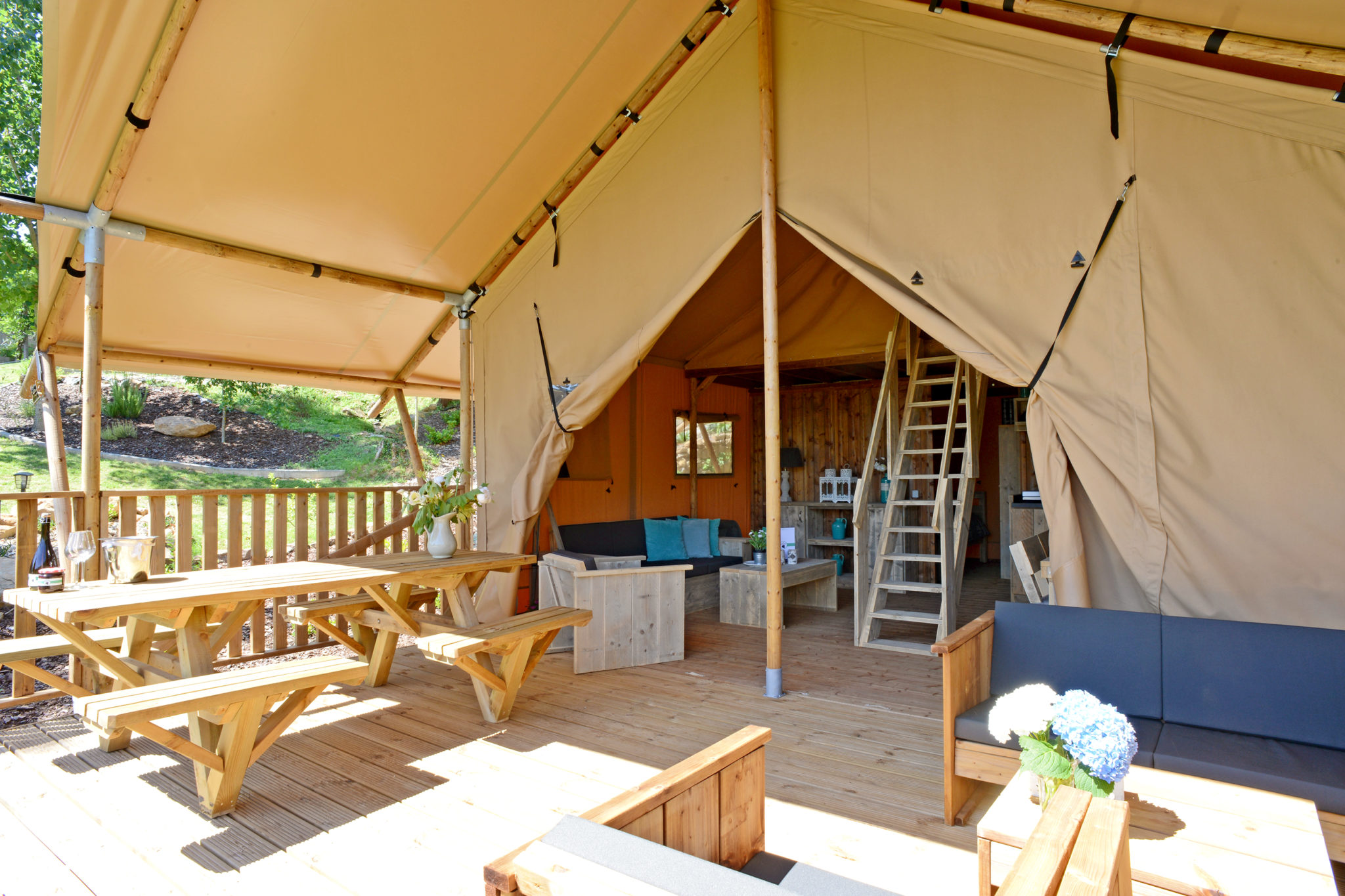Tips to extend the lifespan of your glamping tents
The time has come: your first glamping season starts. You have purchased some safari tents that have been built by us and the first guests have booked their holiday. Bring on the holiday season! We can imagine that you want to keep your glamping tents in good condition for as long as possible so that you can welcome guests for years to come. Here are some tips to extend the lifespan of your glamping tents.
1. Advise your guests how to take care of the safari tents
The first and most important tip is to advise your guests about the correct use of the glamping tents. We highly recommend that you put an instruction sheet in the tent or visit your guests on arrival to explain the use of the safari tent yourself. There are several things that your guests need to be made aware of when using the safari tent to reduce the risk of damage to the material and to prevent possible leakages.
● Ask your guests not to hang any wet laundry or towels over the canvas. It can be tempting for guests to hang up their wet towels after a visit to the pool, for example, but this is not recommended, as it can damage the canvas and reduce its water-resistant properties.
● Make sure your guests do not place chairs or other furniture against the canvas. The friction caused by furniture rubbing against the canvas can damage the material which can lead to leaks.
● Greasy fingers can also affect the water-resistance of the canvas, so ask your guests to try to avoid touching the tent fabric as much as possible.
● Tell your guests that they should provide good ventilation if they wish to cook in the tent during inclement weather. This will help to reduce the risk of condensation on the canvas.
● Ask your guests to always check that kitchen appliances and the gas are turned off when they leave the tent or go to bed.
2. Utilise extra protection outside the holiday season
As you are aware, our canvas has been treated to protect it from UV-radiation and other weather influences, making it mould- and dirt- resistant. However, continuous exposure to UV light and the weather can affect the properties of the canvas over time. That is why we have an optional winter pack for use outside of the holiday season, thereby providing further protection of the canvas against various weather and environmental influences. Contact one of our colleagues who would be happy to tell you more about this option.
3. Determine the optimal location for the glamping tents at your site
Before you place the glamping tents on-site, first decide on the best spot to place them to meet your guests’ expectations as well as to extend the life of your investment. Here are some suggestions.
Tips for positioning your glamping tents near the forest
Do you want to position the glamping tents near the forest? Then see if you can place a little distance between the trees and the safari tents to ensure that there is enough space for daylight and wind to circulate, which will keep the tents well ventilated and enable them to dry easily. If the canvas is affected by algae growth or mould, use a mild 3% chlorine solution and a soft brush to remove these deposits. Make sure you rinse the canvas well with water afterwards.
Tips for positioning your glamping tents near the sea
When you wish to place your glamping tents in a coastal location, it is advisable to take extra measures to keep your tent canvas beautiful. Ensure that salt deposits from the canvas and PVC roof are removed with a soft brush prior to and immediately after the holiday season, to keep your safari tent in good condition. Do not forget to clean the ends of the wooden frame, because sand and salt residues will cause the wood to remain wet for longer and can, therefore, lead to early rot.
4. Keep the tent clean and fresh
Are there mud residues on the tent or the groundsheet? Do not use soap to clean the tent cloth, as this can cause the fabric to deteriorate and reduce its protection against mould and leaks. It is also important to ensure good ventilation of the tent and it is recommended to leave them open in good weather when the tents are not being rented.
5. Check the status of your glamping tents regularly
It is recommended that you check your glamping tents after guests depart, to ensure there is no damage to the tent and that everything has been left neatly. It is advisable to pay attention to even the small details during this check, such as any possible damage to zippers. If you discover that a zipper is no longer working perfectly, you can easily repair it which should prevent you from having to replace the full zipper. It is also recommended to lubricate zippers annually, to help them remain in good condition. Regularly check the rattles and tensioning of the safari tent, especially before and after stormy weather. The tighter the tent is, the better it can withstand strong winds. However, be careful not to stretch the tent too tightly, to prevent damage to the zippers. After adjusting the tension, check that the black straps are properly secured to ensure your glamping tent remains fixed. If you keep the zippers clean and the tents secured with ‘normal’ tension, you ensure that the pullers can do their job properly and that your glamping tent stays in place.
If you have questions about this blog or want to to know more about our glamping tents with a 8 tot 10 year lifespan, don’t hesitate to contact us.
